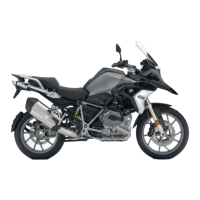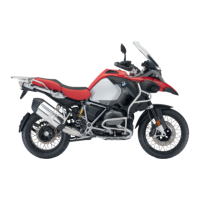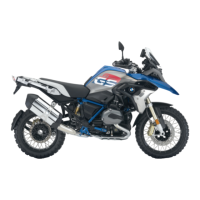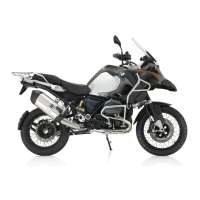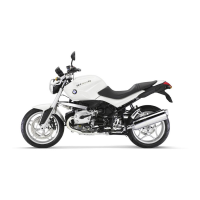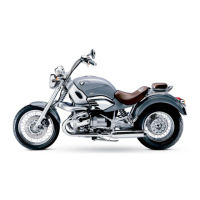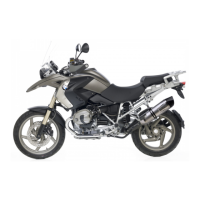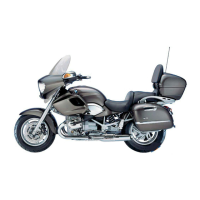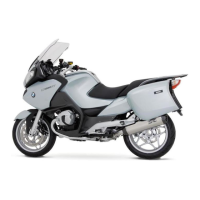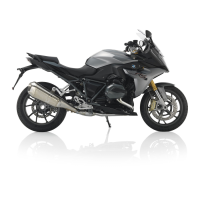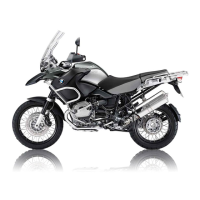General instructions
To find out more about engineer-
ing, go to:
bmw-motorrad.com/techno-
logy
Anti-lock brake system
(ABS)
Partially integral brakes
Your motorcycle is equipped with
partially integral brakes. Both
front and rear brakes are applied
when you pull the handbrake
lever. The footbrake lever acts
only on the rear brake.
While the brakes are slowing the
motorcycle with ABS actively in-
tervening, the BMW Motorrad
Integral ABS adapts braking-force
distribution between front and
rear brakes to suit the load on
the motorcycle.
ATTENTION
Attempted burn-out despite
Integral braking function
Damage to rear brake and clutch
Do not burn out tyres.
How does ABS work?
The amount of braking force that
can be transferred to the road
depends on factors that include
the coefficient of friction of the
road surface. Loose stones, ice
and snow or a wet road all have
much lower coefficients of friction
than a clean and dry asphalt sur-
face. The lower the coefficient
of friction, the longer the braking
distance.
If the rider increases braking
pressure to the extent that brak-
ing force exceeds the maximum
transferable limit, the wheels start
to lock and the vehicle loses its
directional stability; a fall is im-
minent. Before this situation oc-
curs the ABS will be activated
and the brake pressure adap-
ted to the maximally transferable
braking force. The wheels con-
tinue to turn and the driving sta-
bility is retained irrespective of
the road condition.
What are the effects of
surface irregularities?
Humps and surface irregularit-
ies can cause the wheels to lose
contact temporarily with the road
surface; if this happens the brak-
ing force that can be transmit-
ted to the road can drop to zero.
If the rider brakes in this situ-
ation, the ABS has to reduce the
brake pressure in order to ensure
driving stability when resuming
contact with the road. Up to this
point, BMW Motorrad Integral
ABS assumes an extremely low
coefficient of friction (gravel, ice,
snow) so that the road wheels
turn in every conceivable situ-
7
122
z
Engineering details
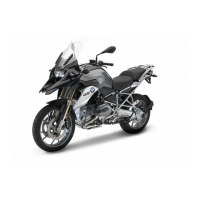
